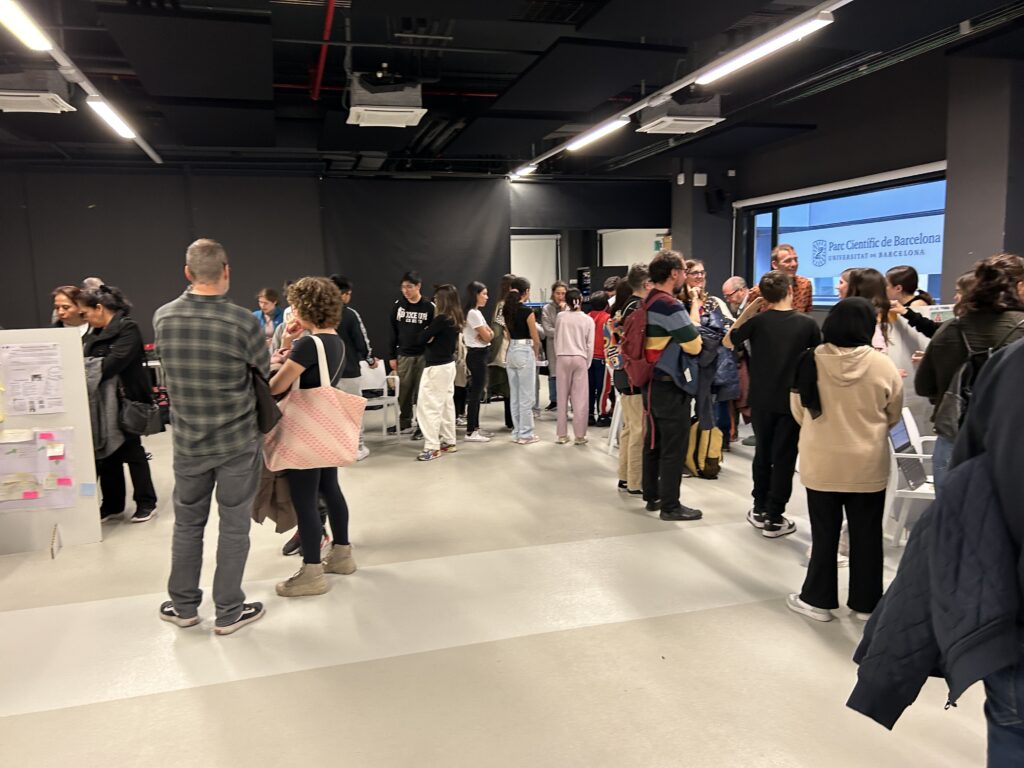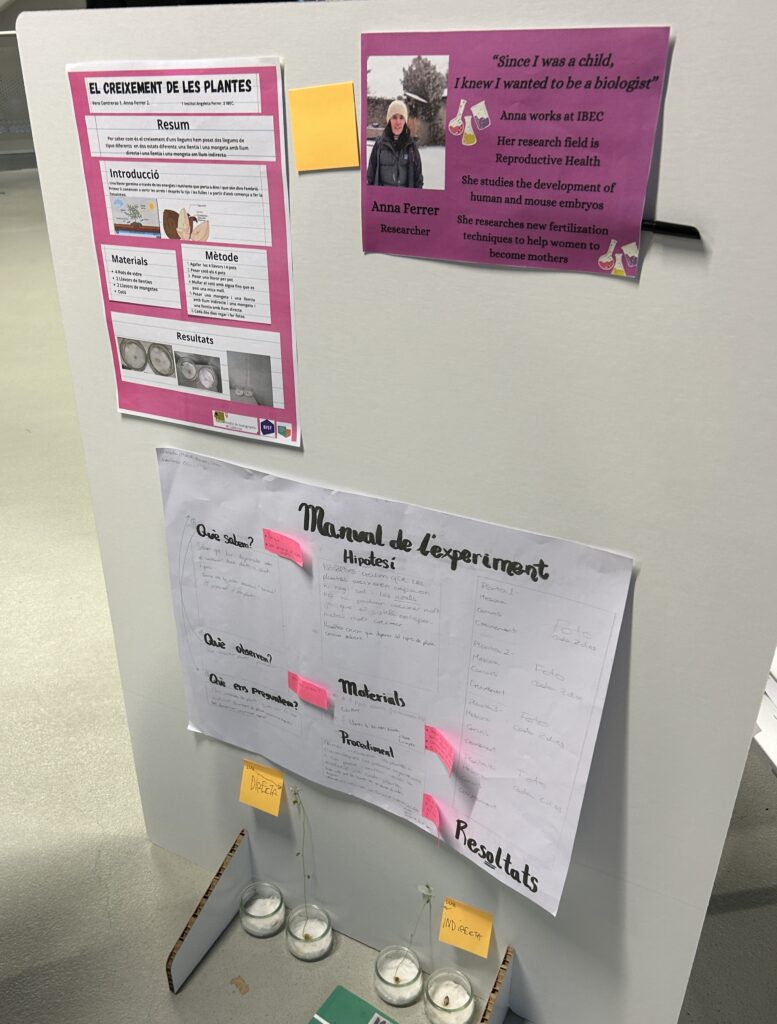Students at the Secondary School Angeleta Ferrer in Barcelona had the occasion to know the HYLIGHT project and learn about in vitro fertilization, embryo selection and reproductive health.

The Institute for Bioengineering of Catalonia (IBEC) and the Secondary School Angeleta Ferrer in Barcelona are working together in a collaboration that aims to bring forefront science closer to secondary students. The activity is based in a strong collaboration among researchers and groups of students for a period of 4-6 weeks.
From one side, researchers explain about their work and the route they followed to become a scientist, through 2-3 online and in person meetings at the school. Afterwards, and based on a concrete example of project research, students adapt the information and apply it to one of the projects they develop at school with their teachers. During all this process, students are in close contact with the researcher to get mentoring and to clarify doubts.
In this context, Anna Ferrer from the Bioengineering for Reproductive Health Group, took part in the initiative explaining the HYLIGHT project. During February and March, a group of six 12-year-old students could learn about in vitro fertilization, reproductive techniques and embryo development. Also, taking HYLIGHT as example, students discovered about the scientific method and how researchers organize their ideas and practical experiments to reach a scientifically relevant conclusion.

Students applied all this knowledge to different scientific topics they were studying at school, related to plant germination and how plants get the energy they need to live. Students developed a hypothesis, designed experiments to test it, obtained results, and drew some conclusions.
At the end of the activity, on the 11th of March, the projects were presented as scientific posters in a “mini congress,” attended by teachers, family, and friends. In addition to gaining scientific knowledge, the students had the opportunity to meet a real researcher got to know the day-to-day life of someone dedicated to experimental science.
